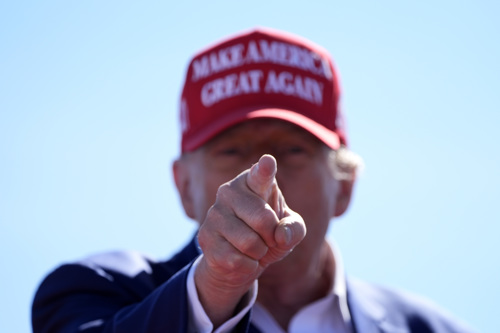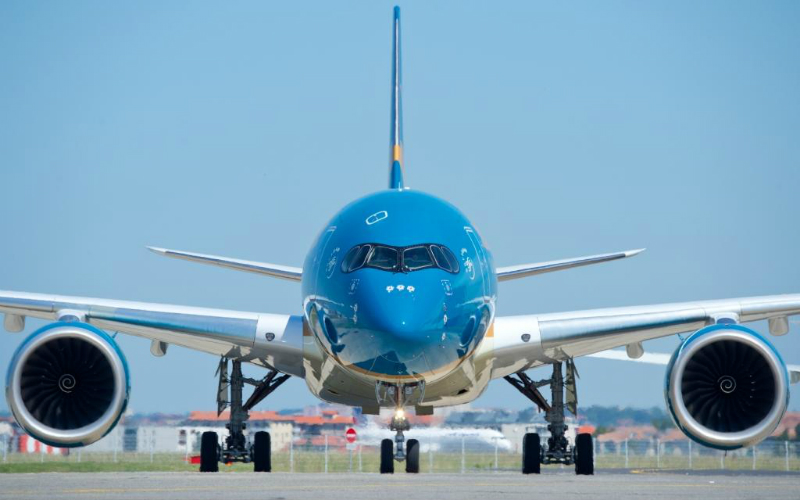A reminder that good changes require hard choices would be good for voters to remember as Donald Trump’s tariffs take effect, a House Republican said on American Family Radio Wednesday.
However, the bumps are real and cannot be ignored, industry observers and small business owners say.
The White House has held cards close to the vest on this initiative but was expected to reveal more information today in an afternoon Rose Garden press conference.
 The event calls itself “Make America Wealthy Again.”
The event calls itself “Make America Wealthy Again.”
For Trump, that’s the point, though he’s been vague on the details.
He sees tariffs as “reciprocal,” a response to nations who have placed their own tariffs on U.S. imports.
From the U.S., 25% across-the-board tariffs on imports from Canada and Mexico have been in effect since March 4.
New tariffs “would start with all countries,” Trump said Sunday, though the President left himself an out by adding the U.S. “may give a lot of countries breaks.”
Differing viewpoints on tariffs
The White House says the plan will help protect U.S. manufacturing. Critics argue the tariffs will slow economic growth and employment.

“This is probably new territory for a lot of Americans. This is a different sort of tax policy that many of us aren't used to,” Rep. Marlin Stutzman (R-Indiana) told show host Jenna Ellis. “President Trump is really doing a reset for American taxpayers and for the American economy.”
The Japanese and Koreans have become the preferred automotive choices in the U.S., Stutzman said.
 “Our domestic companies … GM, Ford, Chrysler … we don’t build cars like we used to,” Stutzman said.
“Our domestic companies … GM, Ford, Chrysler … we don’t build cars like we used to,” Stutzman said.
It’s also been a struggle for the U.S. to keep up with China which has a far different manufacturing landscape.
“They don't have the environmental rules that we do here in the United States. They don't have the labor rules. They just play at a very different level, and they can produce things very cheaply,” Stutzman said.
Heritage warns of economic pain
Rules aside, the auto industry is complex. A tariff might not apply to a finished product at a U.S. plant, but it could apply to a number of parts and pieces that make up the whole, Richard Stern, of The Heritage Foundation, told AFN.
Consumer’s may be thinking about a tariff at a car dealership, but it could hit them again when they set out for do-it-yourself repairs.

The tariff “is going to be 25% on all foreign-made cars, and it's also going to be 25% on all car parts that are made abroad. That’s going to hit car parts that are both something that you might buy to make a repair to your car, but it's also going to hit car parts that come into U.S. car manufacturers who don't make the entire thing from scratch in the U.S."
The only way a car manufacturer will miss out on a tariff is if the entire product is made in the U.S. using parts that also were made in the U.S., Stern said.
Toyota, Nissan, Honda and Hyundai are just a few foreign car manufacturers with U.S. production campuses.
 “This is not Toyota vs. Ford,” said Stern.
“This is not Toyota vs. Ford,” said Stern.
But Toyota vs. Ford could see Ford, with a reputation for assembling most of its vehicles in the U.S., with a big advantage.
If 80% of a car’s value is produced in Japan then shipped to the U.S. for assembly, that’s a problem for Toyota, Stern explained in his hypothetical.
“If 80% of the car value is made in Japan and then the assembly plant is in the U.S., and the assembly value is only 20% of the car, then the tariff is going to apply on the 80% that was brought in from abroad,” he said.
Different companies will deal with tariff costs in different ways.
Honda will spread the cost to all of its sales rather than have just one model that may have been produced and assembled elsewhere then shipped to the U.S., become subject to new buying patterns from consumers, a Tupelo, MS, dealer explained.
A small-business point of view
Kristin Rae was a small-business traveler on Trump’s bumpy tariff road during his first term.
Rae is the founder and designer of Inspire Travel Luggage, which promotes its brand as “Made in the USA.”
“These taxes on businesses stifle innovation in several ways. Businesses will pull back on percent of capital expenditures, they’ll reconfigure budgets, they may not hire as many employees. The uncertainty is worse.
 “Without a definitive tariff, most business could say, ‘I might not have any risk here,’ but businesses that don’t know are all pulling back. There’s definitely a chilling effect when it comes to businesses, but also consumers” who might feel they need to tighten their own budgets, Rae told the Taxpayers Protection Alliance podcast.
“Without a definitive tariff, most business could say, ‘I might not have any risk here,’ but businesses that don’t know are all pulling back. There’s definitely a chilling effect when it comes to businesses, but also consumers” who might feel they need to tighten their own budgets, Rae told the Taxpayers Protection Alliance podcast.
The impact for business can’t be overstated, and it takes time for the effects – fewer employees leading to lesser service, fewer jobs – to reveal themselves.
During Trump tariffs in 2017, Rae said her company was forced to temporarily close while she secured U.S.-based suppliers.

“It took years to find adequate suppliers here in the states. It takes time to turn the ship.”
There have been signs that Trump’s tariffs will have the impact he desires. Already automakers Hyundai, Honda and Stellantis have announced expansion plans in the U.S.
But there’s a difference between an announcement and a churning assembly line, and withholding details about his plans for periods of time might not be Trump’s best play.
“These plants that they want them to build” might not come about because “investors don’t feel safe making those investments without kind of knowing what’s happening,” Rae said.







